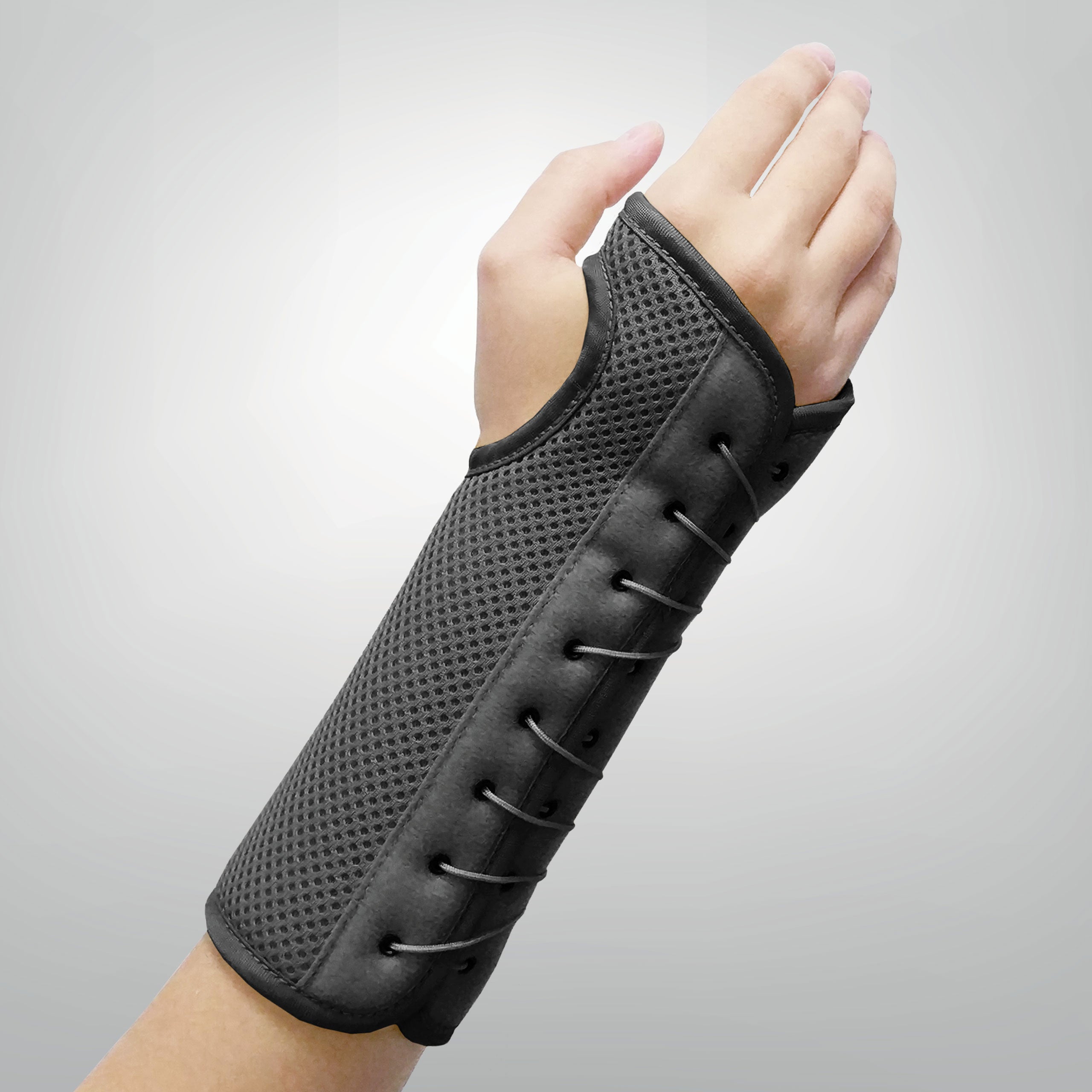
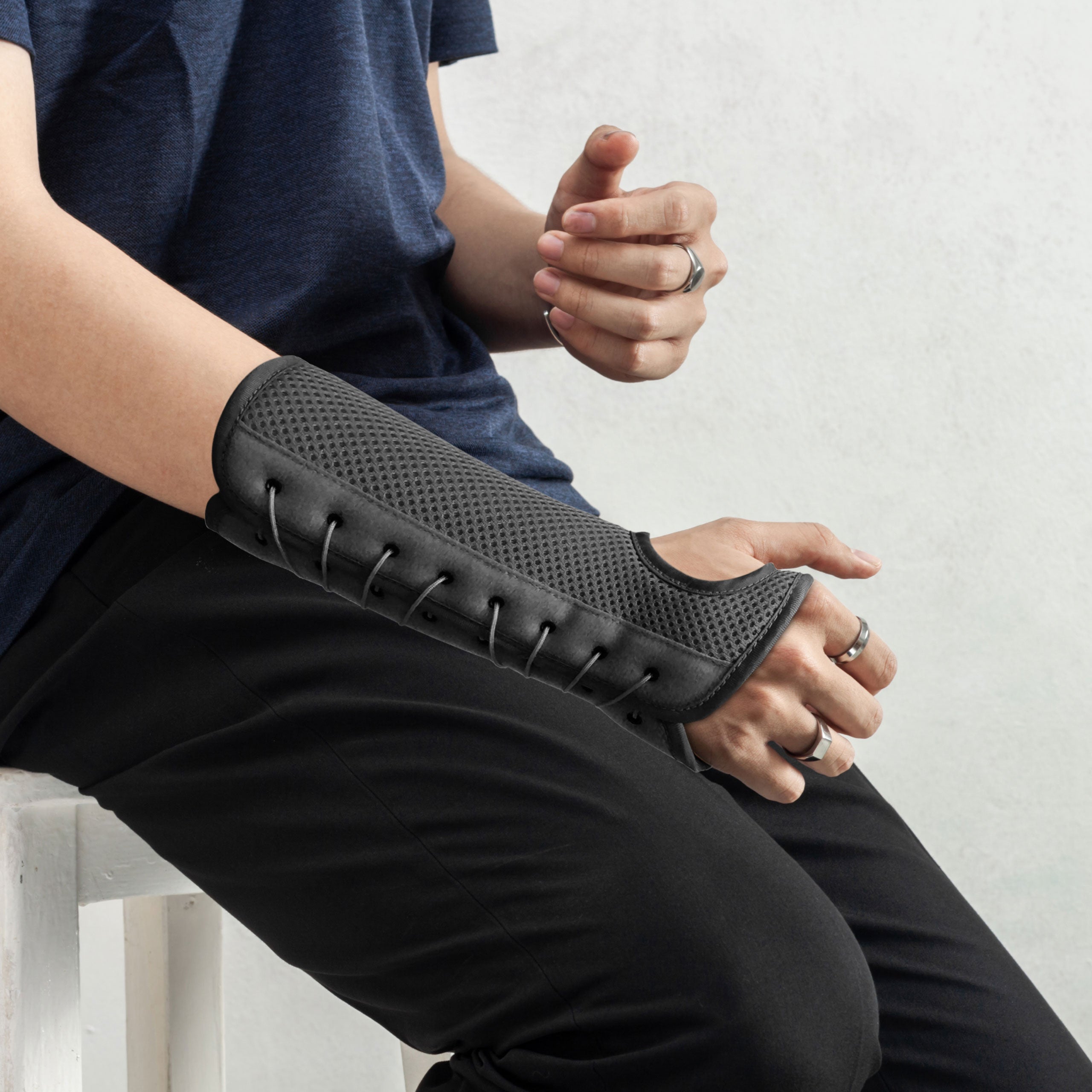
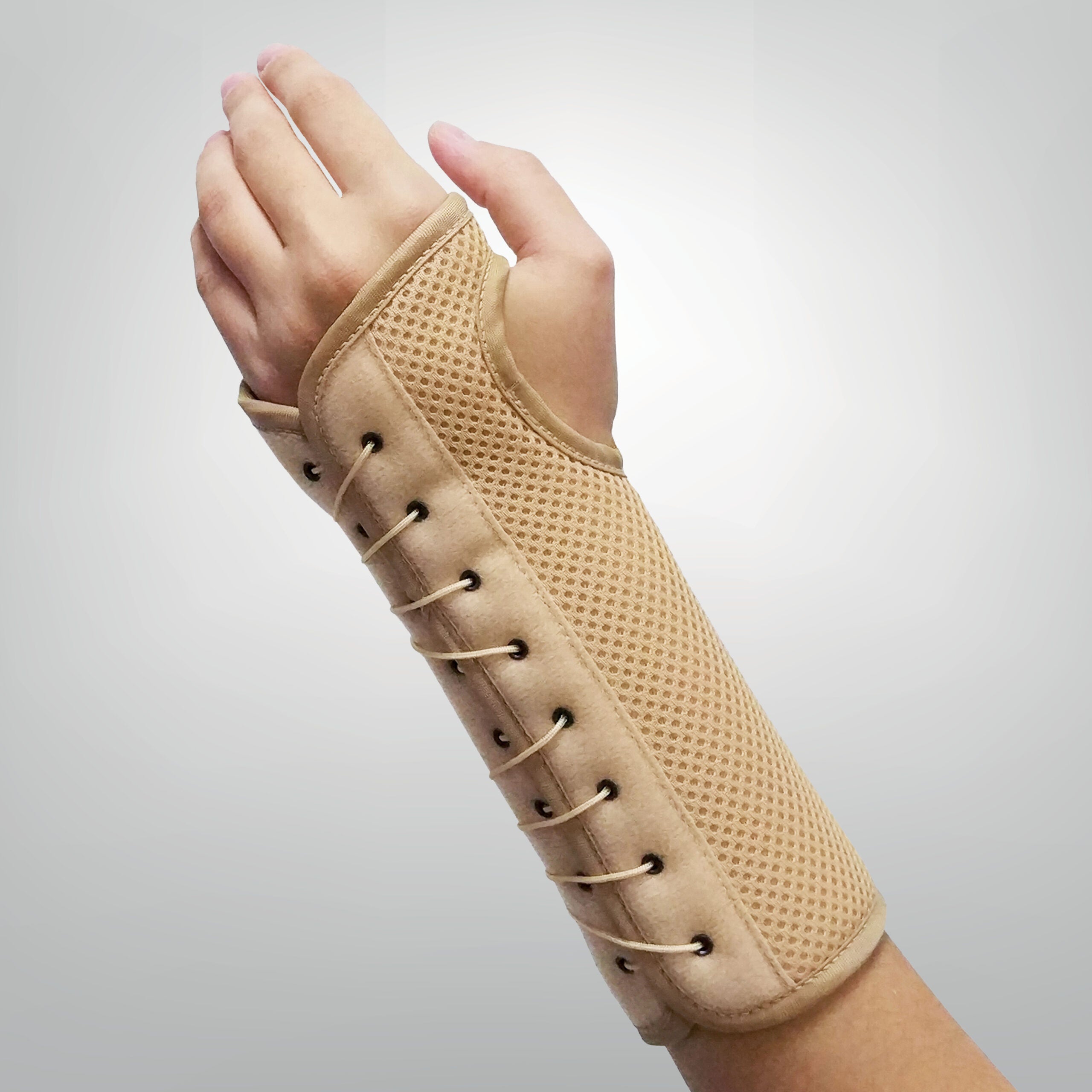
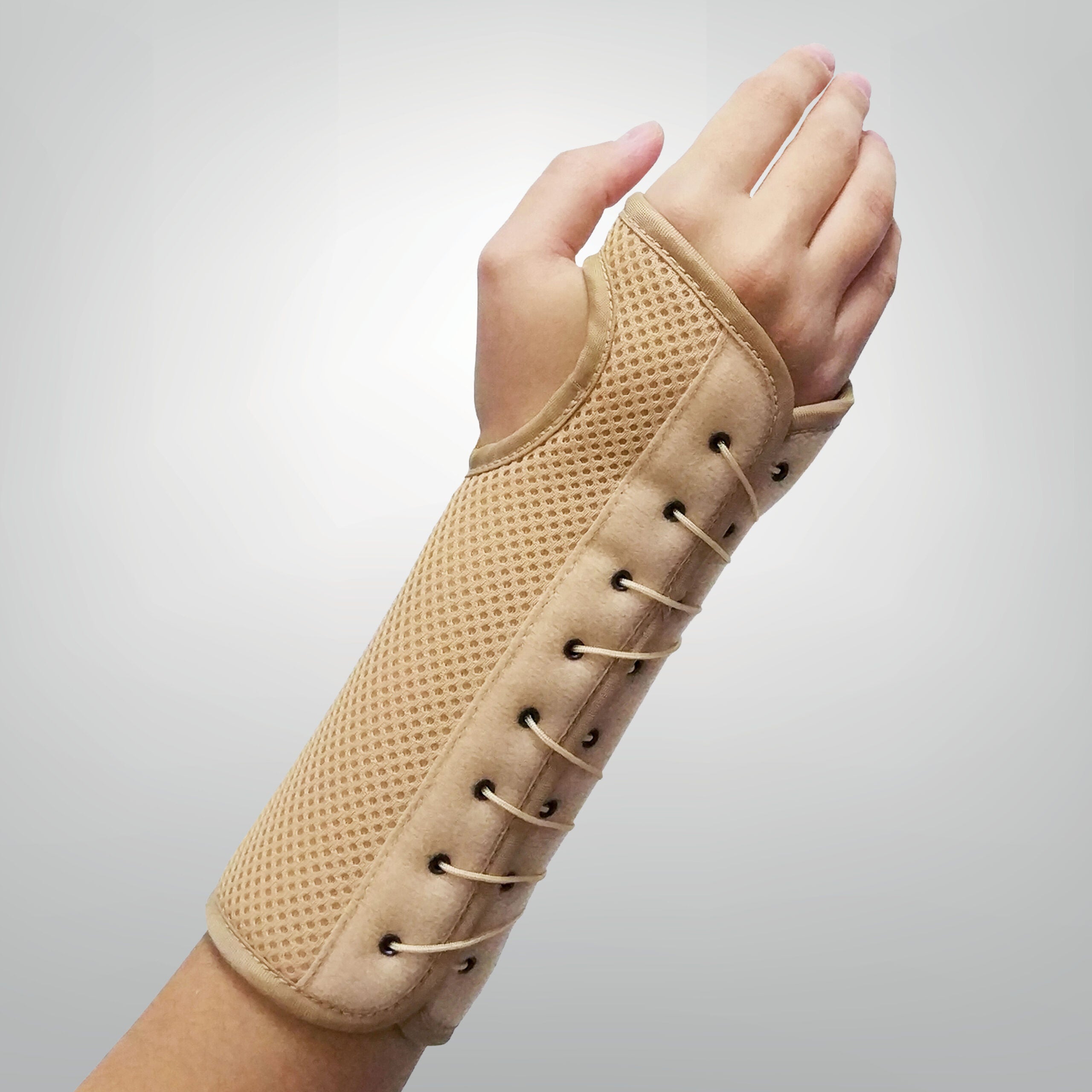
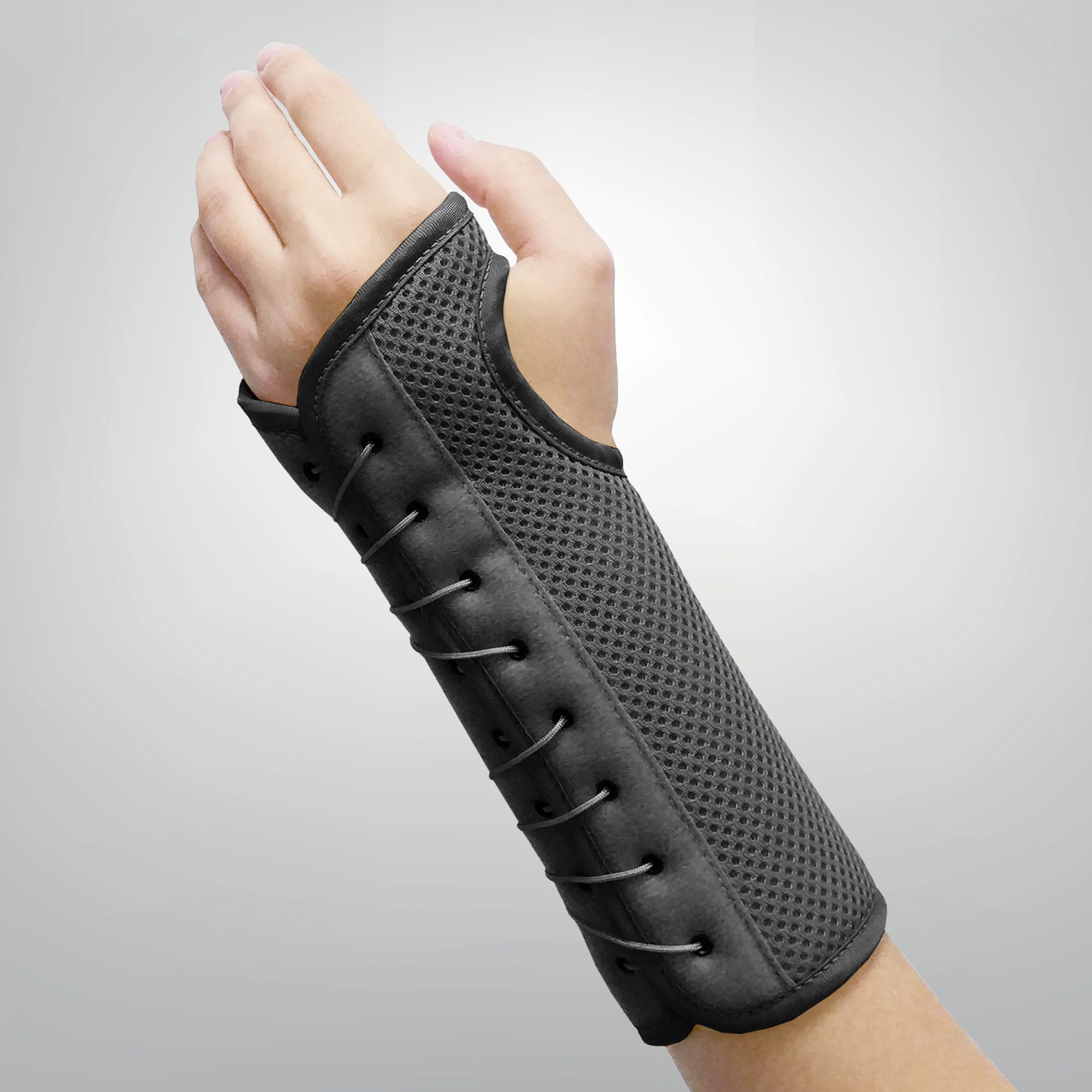
Wrist splint | 267
Wrist splint with rigid wrist stabilizer
Designed to support and stabilize the wrist.
Has an aluminum splint for the palm and thumb, which is anatomically fitted around the wrist and holds it in a functional position with a 35° inclination (adjustable).
Easy lace-up closure ensures a perfect fit.
Made of high-quality mesh fabric with a pleasant-to-the-touch lining to increase ventilation and reduce heat and humidity.
Medical indications:
- Carpal Tunnel Syndrome
- Tendonitis
- Sports injuries
- Joint wear and tear (Osteoarthritis)
- Fractions
- De Quervain's Tenosynovitis
- Sprains and strains
- Postoperative use
- General support.

Dimensions

Extended description
It is important to consult a doctor or specialist before using this product to ensure that it is appropriate for your specific medical condition and to receive appropriate usage instructions.
- Carpal Tunnel Syndrome: To help reduce pressure on the median nerve
- and to relieve symptoms.
- Tendinitis: Wrist support to relieve pain and tendonitis. Sports injuries: Wrist support to relieve pain and prevent unnecessary movement during recovery
- From sports injuries.
- Osteoarthritis: Pain relief and maintaining stability of the affected joint.
- Fractures: Support and stabilization of the wrist during the recovery process from a fracture. De Quervain's Tenosynovitis: Pain Relief and Support for Movement Prevention
- which worsen the symptoms.
- Sprains and Strains: Support and protect the wrist while recovering from ligament and tendon injuries.
- Post-surgical use: Wrist support after orthopedic surgery for stabilization and pain reduction. General support: Suitable for cases where general support is required for the wrist in cases of minor injuries or
- Prolonged efforts. It is important to consult a doctor or specialist before using this product to ensure it is suitable for your medical condition.
- Your specific and receive appropriate usage instructions.
User manual
- Make sure the splint is clean and ready for use.
- Wash and dry your hand before use.
- Loosen the lace fasteners.
- Place the splint around your wrist and thread your thumb through the hole.
- Stretch the Velcro tabs to which the laces are attached and tighten the brace.
- Make sure the brace is tight enough to provide stability and support to the wrist, but not too tight as to cut off blood flow.
- Check and adjust the brace throughout the day as needed. You can increase or decrease the amount of pressure depending on how you feel throughout the day.
- The splint should be cleaned periodically depending on the degree of use.
- The brace should be worn for the time recommended by your doctor or physiotherapist.
- While using the brace, it is recommended to perform exercises to improve range of motion and strengthen muscles, as recommended by your healthcare professional. These exercises can help with a better and faster recovery.
Our expert advice

It is important to consult a doctor or specialist before using this product to ensure that it is appropriate for your specific medical condition and to receive appropriate usage instructions.
- Carpal Tunnel Syndrome: To help reduce pressure on the median nerve
- and to relieve symptoms.
- Tendinitis: Wrist support to relieve pain and tendonitis. Sports injuries: Wrist support to relieve pain and prevent unnecessary movement during recovery
- From sports injuries.
- Osteoarthritis: Pain relief and maintaining stability of the affected joint.
- Fractures: Support and stabilization of the wrist during the recovery process from a fracture. De Quervain's Tenosynovitis: Pain Relief and Support for Movement Prevention
- which worsen the symptoms.
- Sprains and Strains: Support and protect the wrist while recovering from ligament and tendon injuries.
- Post-surgical use: Wrist support after orthopedic surgery for stabilization and pain reduction. General support: Suitable for cases where general support is required for the wrist in cases of minor injuries or
- Prolonged efforts. It is important to consult a doctor or specialist before using this product to ensure it is suitable for your medical condition.
- Your specific and receive appropriate usage instructions.
- Make sure the splint is clean and ready for use.
- Wash and dry your hand before use.
- Loosen the lace fasteners.
- Place the splint around your wrist and thread your thumb through the hole.
- Stretch the Velcro tabs to which the laces are attached and tighten the brace.
- Make sure the brace is tight enough to provide stability and support to the wrist, but not too tight as to cut off blood flow.
- Check and adjust the brace throughout the day as needed. You can increase or decrease the amount of pressure depending on how you feel throughout the day.
- The splint should be cleaned periodically depending on the degree of use.
- The brace should be worn for the time recommended by your doctor or physiotherapist.
- While using the brace, it is recommended to perform exercises to improve range of motion and strengthen muscles, as recommended by your healthcare professional. These exercises can help with a better and faster recovery.
Blog

Treating Lower Back Pain: 6 Tips to Improve Quality of Life
Suffering from lower back pain? You are definitely not alone. There are many ways to deal with one of the most common pains in the world, here are some of them. It's time to relieve the pain.
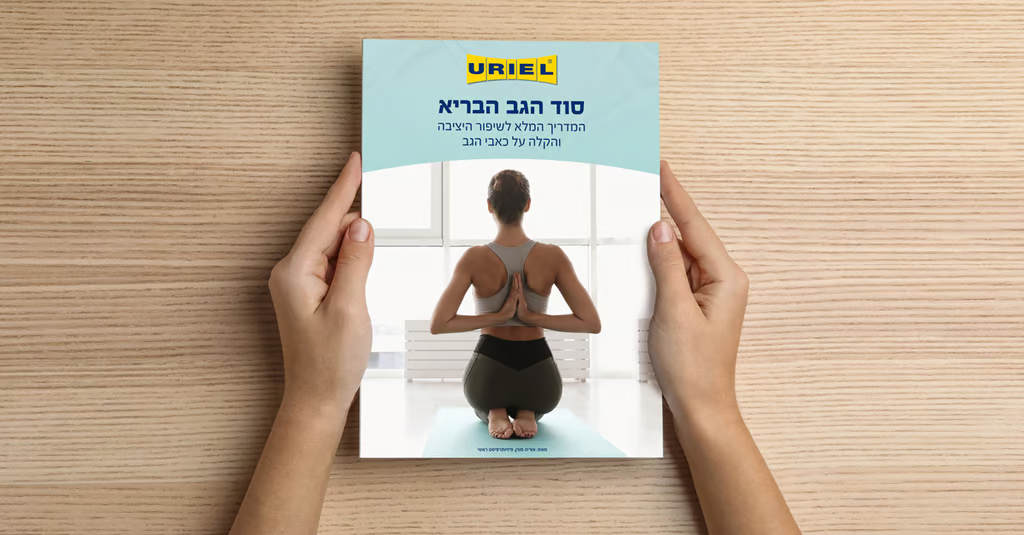
The Secret to a Healthy Back: The Complete Guide to Improving Posture and Alleviating Back Pain
Is back health important to you? Get the 'Secret of a Healthy Back' guide containing information, tips and useful advice for relieving back pain. By Oriya Moran, Chief Physiotherapist Download t...

Kinesio tape or professional elastic bandage?
Suffering from sports injuries, bruises or simply pain caused by medical problems? Get to know the variety of dressing products that will support you. When should we use kinesiology tape and why d...
